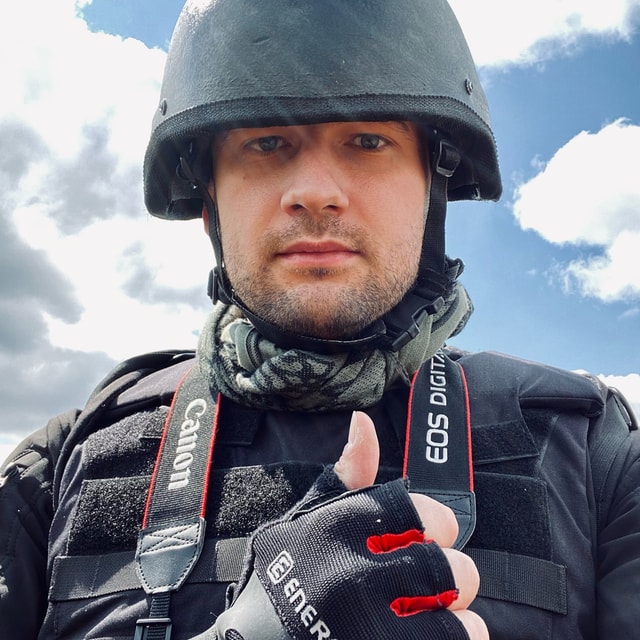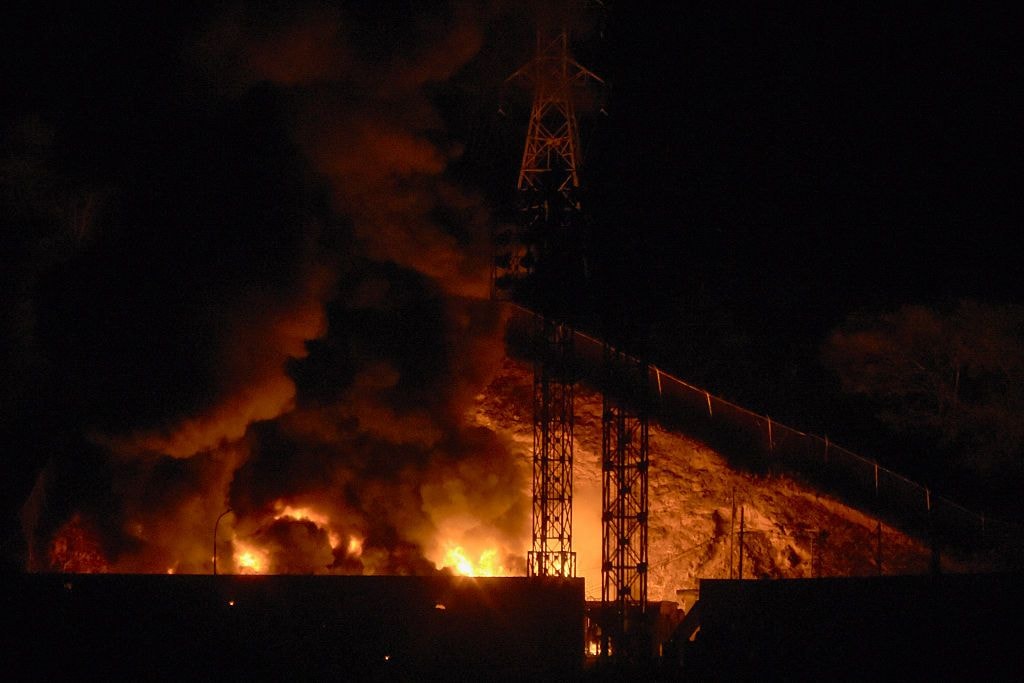Historic loss of flagship deals humiliating blow to Russia's naval power

The Russian-Ukrainian war has produced yet another hallmark event in the history of warfare.
On April 14, after 49 days of Russia’s all-out war, Ukraine inflicted a devastating blow upon the Kremlin’s pride and the symbol of its naval power in the Black Sea.
Missile cruiser Moskva, the Black Sea Fleet flagship, sank following what Ukraine claims was a double strike by the Neptune coastal defense missile system recently accepted in service.
The Russian catastrophe will leave a mark in history textbooks.
The Moskva is the first major warship destroyed in combat by a Ukrainian anti-ship missile. And it is the first Russian flagship destroyed and lost since World War II.
Moreover, it is a key warship lost in combat to a nation that has effectively no navy.
The sensational loss challenges Russia’s status as a naval power and undermines its air defense capabilities against Ukraine in the Black Sea.
Russian pride
The Moskva has had a complicated history.
She was laid down in 1976 and launched in 1983 under the name Slava (“Glory”).
The Slava was the first warship of the 1164 Atlant, the Soviet project to build a class of modern and powerful guided-missile cruisers, known as the Slava-class cruisers. They were supposed to become “aircraft carriers' killers” confronting the essence of the U.S. naval power.
The Slava was the second most powerful class of Russian warships, following nuclear-powered Kirov-class missile cruisers, the world’s largest combatant warships.
The Slava-class ships were to pose a threat to key U.S. and NATO battleships and aircraft carrier groups, as well as aircraft and submarines, covering all domains from undersea to the air.
The Soviet Union planned on building a total of 10 warships of the Slava-class in Ukraine’s Mykolaiv, one of the key shipyards in the USSR. But just three were completed and commissioned before the end of the Soviet Union in 1991. Russia has never built another Slava-class ship on its own.
Two of the three completed ships eventually became Russian flagships: the Slava with the Black Sea Fleet and the Varyag with the Pacific Fleet. The third ship, Admiral Ustinov, serves with Russia’s Northern Fleet.
Another warship of the class, the Ukraina, was not finished and is still moored at the Mykolaiv shipyard in Ukraine. Time and again, for years, many in Ukraine have called on completing the ship’s construction. The project requires massive investment and is questionable in terms of the old vessel’s applicability nowadays.
As a large and mighty warship, in the late Soviet era, the Slava also served ceremonial duties.
The ship participated in the Malta Summit of 1989, where Soviet leader Mikhail Gorbachev and U.S. President George H. W. Bush declared the end of the Cold War. But due to awful weather and strong sea swell, the Soviet delegation had to stay and hold talks on different warships.
The fall of the Soviet Union in late 1991 was a blow to Russia’s Black Sea Fleet.
The missile cruiser spent the 1990s at the Mykolaiv shipyard for repairs. Due to the extreme lack of financing, the Russian command even had to concede the warship’s parts and components to pay for the works.
The fleet’s only guided-missile cruiser, the region’s biggest warship, was seen by many as a symbol of Russia’s hope of its maritime power rising again after the Soviet collapse.
According to Russian media, the warship enjoyed the patronage of Yuriy Luzhkov, the perennial mayor of Moscow, who zealously advocated the idea of Russia’s annexation of Crimea in the 1990s. So in 1996, in a bid to upgrade the vessel’s political heft, the Russian navy renamed it the Moskva.
By the time Vladimir Putin came to power in 2000, the Moskva ended up the Black Sea Fleet’s biggest warship, the only missile cruiser, and the key tool of Russia’s projection of military power at the sea.
The Moskva was designed to carry out a wide range of combat missions in all domains.
The 11,500-ton vessel carried a 130-millimeter AK-130 artillery system, an AK-630 close-in weapon system of six 30-millimeter air defense cannons.
The missile arsenal included eight P-1000 Vulkan anti-ship launchers. Air defense capabilities were ensured by eight S-300F Fort systems and two M-4 Osa-M systems. It also carried 533-millimeter torpedoes and two RBU-600 anti-submarine launchers.
The Moskva was capable of providing air defense to all other warships and aircraft within a semi-sphere 150 or 300 kilometers in diameter, depending on the type of S-300 missiles applied (a total of 64 available). The P-1000 Vulkan system could target warships at a distance of up to 700 kilometers.
It could also carry a Kamov Ka-27 helicopter.
The flagship had multiple missions across the world, notably in the Mediterranean, and also some combat record.
She was used during the Russo-Georgian war of 2008, blocked Ukrainian warships in the Donuzlav Bay during Russia’s annexation of Crimea in early 2014, and then provided air cover to Russia’s air campaign in northern Syria in 2015.
But after 2015, the Russian navy began saying that the flagship required repairs and modernization. The Russian media reported the lack of financing, and Ukraine’s Mykolaiv shipyard, Moskva's birthplace, was not available for service.
The plans to install newer S-400 air defense systems were never realized. And the Moskva had to stay in Sevastopol for overhaul works that lasted nearly three years.
Since August 2020, the Moskva has been at sea again, being presented as the fully capable, most powerful, and the best Russian Black Sea Fleet warship. The Russian navy expected her to stay in ranks for “many more decades.”
Interestingly, since 2020, the warship also reportedly carried a religious relic — a tiny part of the True Cross, on which, according to Christianity, Jesus Christ was crucified. According to Russian media outlets, the relic was purchased by unnamed Russian benefactors and installed at the ship’s chapel.
The Moskva continued projecting power — in April 2021, a P-1000 missile for the first time successfully hit a maritime target from a distance of 30 kilometers in the Black Sea during drills.
Naturally, she took a leading role in the Russian all-out war against Ukraine in the Black Sea. By an ironic twist of fate, the Moskva was the very vessel to which the now-iconic phrase “Russian warship, go f*ck yourself” was addressed by a Ukrainian marine during the Snake Island attack on Feb. 24.
The Moskva continued providing cover to Russian naval groups in the northwestern Black Sea, particularly to warships firing cruise missiles Kalibr against Ukrainian military targets and civilian infrastructure.
Her presence in the region, along with much of Russia’s Black Sea fleet, effectively blocked all maritime traffic to the Ukrainian ports of Odesa and Mykolaiv.
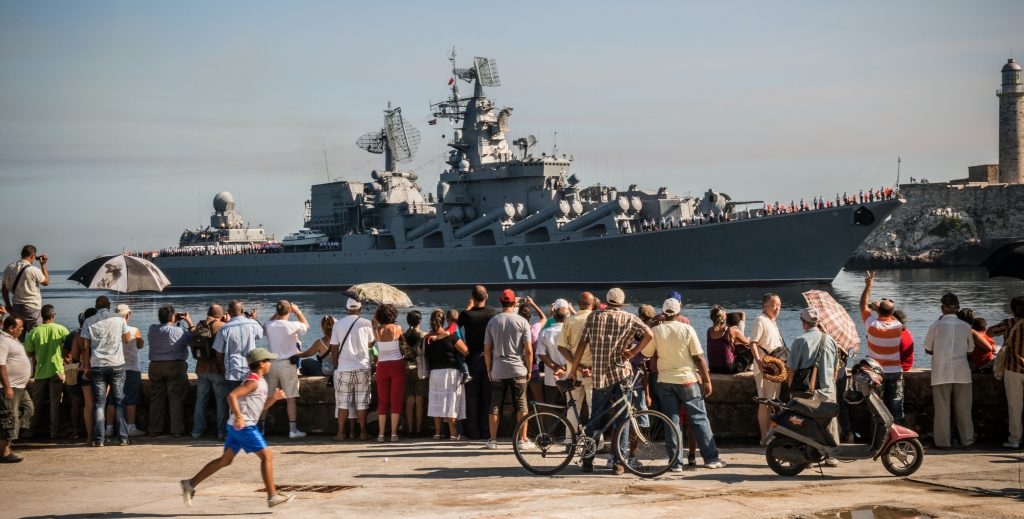
A historic loss
And then April 13, 2022, came.
The Moskva was cruising west of the Snake Island, nearly 80 nautical miles (150 kilometers) south of Odesa.
A late-night report from the Odesa Oblast administration drew some attention but was met with considerable skepticism in the media: It said that the Ukrainian military targeted Moskva with two Neptune missiles and the ship “sustained very serious damage.”
Russia stayed silent about the ship until the next morning.
Early on April 14, the Russian Defense Ministry issued a muffled statement about “a fire” that caused “a munition detonation” on the cruiser. The crew, presumably over 500 personnel, was reportedly evacuated, and the “cause of the fire was yet to be determined.”
Not a word was said about any casualties.
As time went by, the Ukrainian military kept insisting that the Moskva was badly damaged by missiles, then tilted and started sinking. And amid a severe sea storm, other Russian warships coming to the rescue could not help, according to Ukraine.
But Russia kept saying the Moskva was still floating and “being towed to port.” Then late on April 14, nearly 24 hours after the Ukrainian attack, the Russian Defense Ministry finally admitted the Moskva sank, saying that it happened amid a sea storm, while it was being towed to a destination port.
The very elusive Russian version says that the 11,500-ton flagship, the Black Sea Fleet’s key vessel, sank following a fire and a detonation, triggered by an unknown factor.
As of April 16, more than two days after the incident, Russia has not officially delivered any information on any casualties among over 500 crewmembers and said nothing about the reportedly evacuated crew’s whereabouts and status.
In Russian-occupied Sevastopol, also not a single word was officially delivered on the Russian sailors’ fate, as of April 16.
Meanwhile, the Moskva disaster may greatly surpass the death toll of the ill-fated Kursk submarine, which sank in 2000, shortly following Vladimir Putin’s coming to power. The catastrophe, in which 118 Russian sailors were killed, caused a nationwide stir in Russia — unlike the current situation.
According to the Kremlin, Putin does not have any plans on visiting Sevastopol or even having a conference regarding the Moskva.
The Russian propaganda media present this as a minor, barely significant incident not worth much attention.
But in fact, the disaster is a unique, almost unbelievable, event.
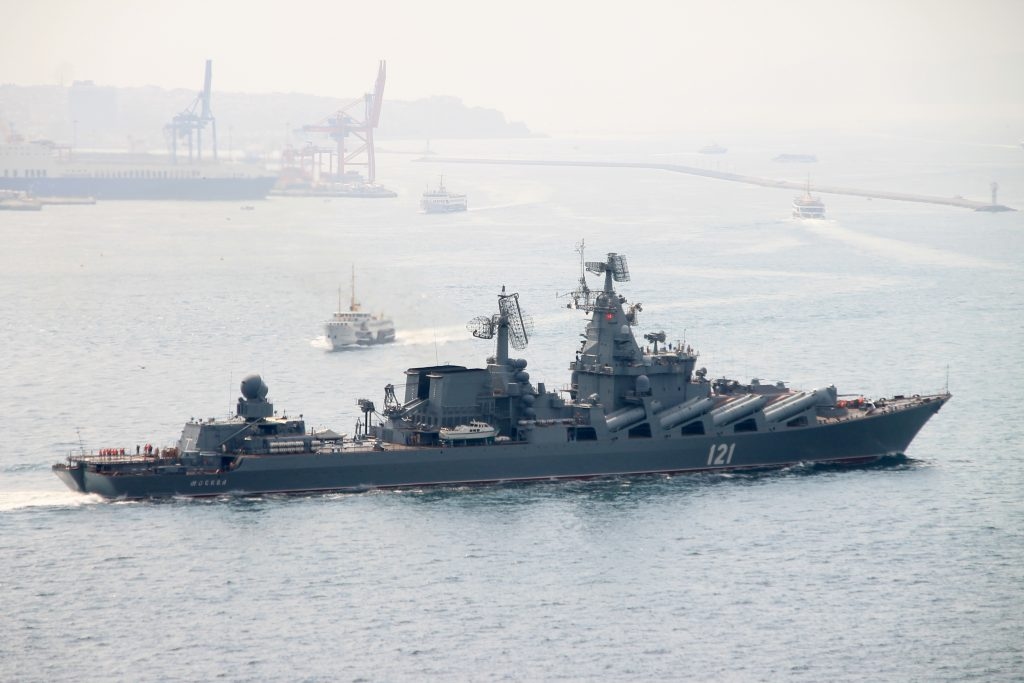
The Moskva is the first Russian flagship completely lost in operation since the death of the Knyaz Suvorov battleship in the Battle of Tsushima against Japan in 1905.
The Moskva was larger than General Belgrano, the Argentinian light cruiser sunk by a British submarine during the 1982 Falklands War.
Moreover, it is a unique, unlikely example of a major warship sunk by two anti-ship missiles that managed to penetrate the Moskva’s defenses, flying at a very low altitude unnoticed by the warship’s radar.
Forbes Ukraine on April 14 estimated that the loss of Moskva cost Russia $750 million.
The Neptune missile system, despite a lot of attention in the media, was considered by many in Ukraine a rather problematic project, mainly due to a chronic lack of funding.
Designed by the Kyiv-based Luch design bureau, the Neptunes were based on older Soviet Kh-35 missiles, and were expected to provide at least some protection against Russian warships.
The RK-360MC Neptune coastal defense missile systems were officially accepted for service in late 2020. They were expected to target ships up to 5,000 tons in displacement and at a distance of no more than 280 kilometers.
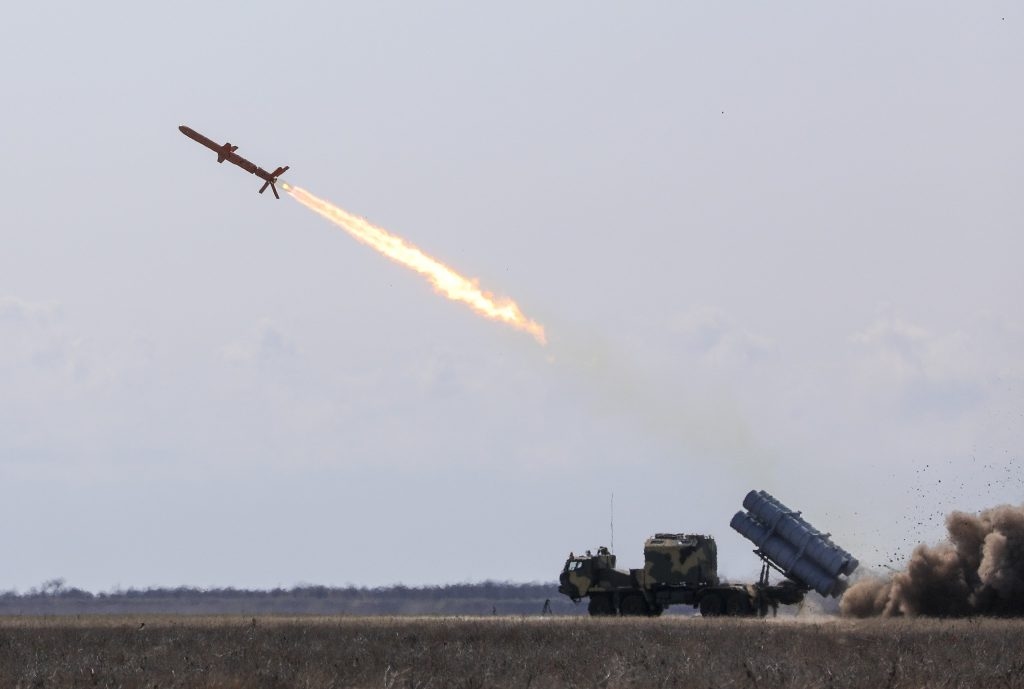
Some Russian reports say the Moskva was sunk by the U.S.-produced anti-ship missiles Harpoon rather than Ukrainian Neptunes, which are considered too weak.
The Ukrainian military hasn’t confirmed any Harpoon system provided to Ukraine by the U.S., although it was requested in 2020.
According to Konstantin Sivkov, the retired Russian Captain First Rank, the Moskva sinking strips the Black Sea Fleet of nearly a third of its might in the open sea.
With the loss, it now has just three frigates as the largest ships, while the redeployment of other large warships from other fleets is not possible due to the closure of the Turkish Straits.
Now, according to monitors, the Kremlin will probably have to rethink operations in the Black Sea.
The Washington-based Institute for the Study of War (ISW) said on April 15 that the possible Russian steps might include moving ships farther from Ukrainian territory and adjusting their air defenses.
Providing air cover to the Russian forces in the Black Sea was the Moskva’s main mission, according to the U.S. Department of Defense spokesman John Kirby.
"It will have an impact on that capability,” Kirby stated on April 15.
“Certainly in the near term.”

